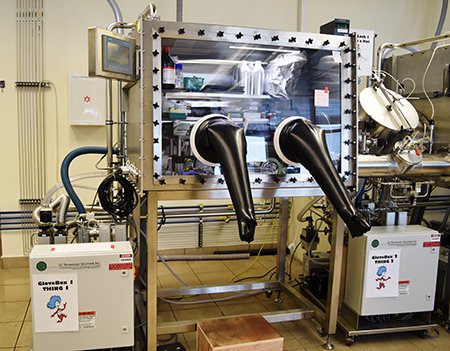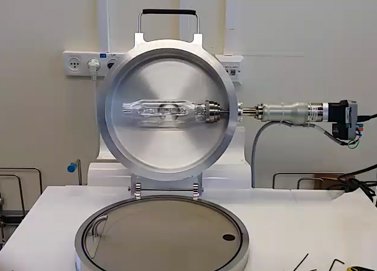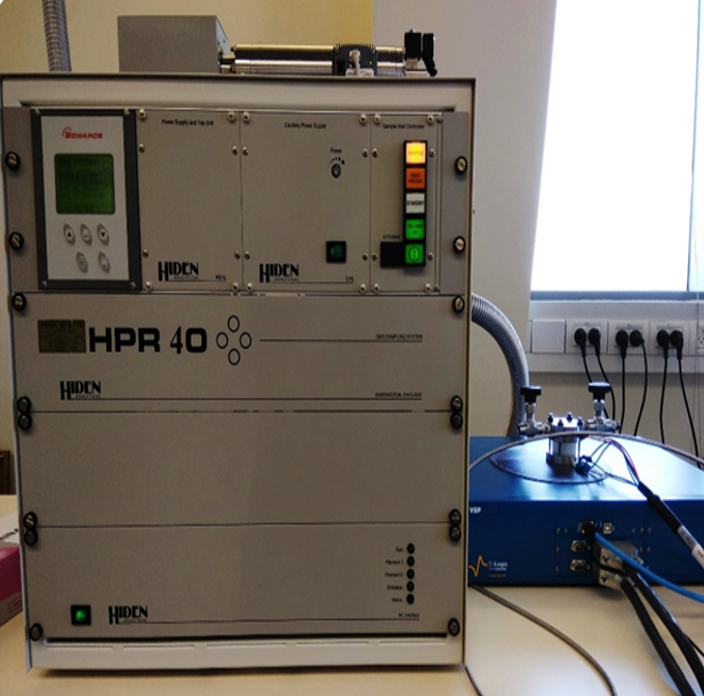
Glovebox
The glovebox system is a complete full size stand alone glovebox. It is capable of achieving and maintaining a less than 1 ppm H2O and O2 inert gas environment when connected to series of gas purification systems.
We use in our lab few glove box systems for (1) Battery assembly, (2) ALD/MLD on reactive surfaces and (3) OEMS analysis under Ar atmosphere.

Atomic/Molecular Layer Deposition (ALD/MLD)
Atomic/Molecular Layer Deposition (A/MLD) offers precise control down to the atomic/molecular scale.
This technique holds tremendous promise across a wide array of industries, including energy, optical, electronics, nanostructures, biomedical, and more.
The principle of atomic layer deposition is similar to chemical vapor deposition (CVD) except the ALD reaction breaks the CVD reaction into two half-reactions, keeping the precursor materials separate during the reaction.
This is accomplished through sequential pulsing of special precursor vapors, each of which forms about one atomic layer during each pulse (reaction cycle). Reaction cycles are then repeated until the desired film thickness is achieved, versus chemical vapor deposition that introduces multiple precursor materials simultaneously.
ALD systems are designed to deposit pinhole free coatings that are perfectly uniform in thickness, even deep inside pores, trenches and cavities.
The ability to deposit such high quality films on substrates with ultra-high aspect ratios is a key feature of the ALD systems.
A wide variety of thin films can be deposited using gas, liquid, or solid precursors.
In our lab we hold two reactors with versatile synthesis capabilities, including plasma enhanced ALD, powder coating units, in-situ QCM and more.

Online electrochemical mass spectroscopy
Online electrochemical mass spectroscopy (OEMS) is one of the techniques that is uniquely utilized in our group for investigating gaseous evolution in-operando, that is in real time coordinates during various battery cycling. We are equipped with a personalized version of HPR-40 system by Hiden analytical and is capable of streaming 9 cells at a time with the help of Multi-stream Inlet. This unique tool allows us to analyze the volatile intermediates and reaction products produced inside the battery during the application of current and voltage without any significant time delay. The unique Micro-Flow Capillary Inlet attached to our system samples at a rate as low as 12 µL/min and thus enables us to sample the battery system for prolonged hours without really changing the battery environment. The insights provided by OEMS provides deep insights about the surface reaction steps and thus helps us to characterize the surface instabilities, electrolytic decomposition and the onset potentials for decomposition. The information’s gathered from OEMS experiments are really useful for commenting on the stability of the system, for overcoming the reasons for instability and for optimizing the working conditions.
Recently, with the help of this instrument, we were able to de-convolute to different beneficial aspects of LiNO3 in lithium-air batteries. We also applied this technique recently for showing the reduced oxygen evolution during activation of surface treated HE-NCM extending the application of this system into Li-ion batteries.

 © Copyright Noked Lab, all Right Reserved
© Copyright Noked Lab, all Right Reserved